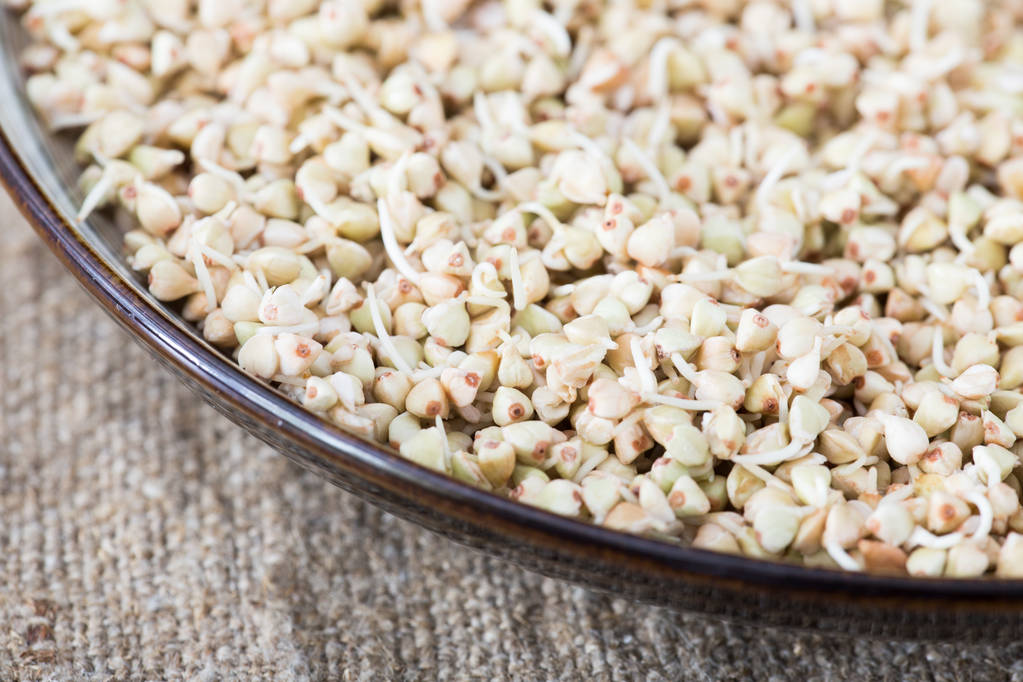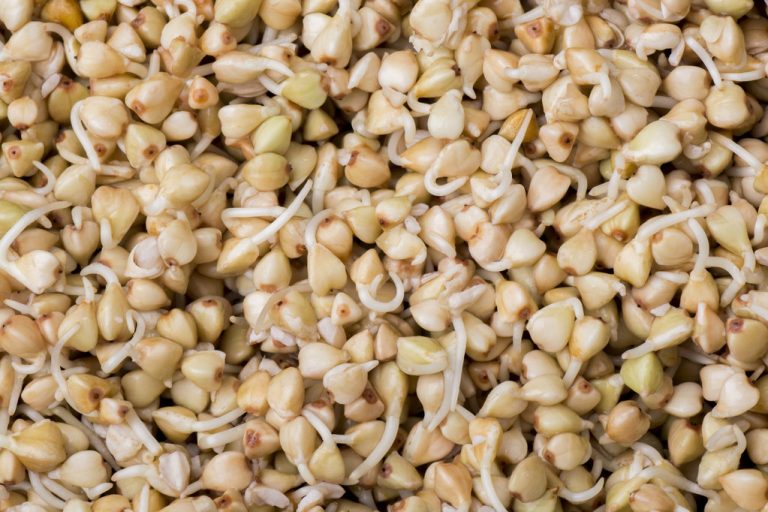Sprouting buckwheat is very easy and takes a maximum of two days. We explain step by step how you can grow your own buckwheat seedlings.
Even if the name suggests otherwise, buckwheat has nothing to do with conventional wheat. In fact, buckwheat belongs to a different plant family and is therefore also referred to as a pseudocereal.
Buckwheat is healthy, suitable for celiac disease (gluten intolerance) and versatile. You can also germinate the pyramid-shaped grains so you can even eat them raw. In our guide we will show you exactly how to do this.

Sprouting buckwheat: step-by-step instructions
To germinate buckwheat, you only need the following utensils:
a sprouting jar with a boiled lid
alternatively: make a sprout glass yourself or use a fine sieve
a handful of buckwheat, preferably organic and raw food quality
Sprouting buckwheat – instructions:
Rinse the buckwheat kernels thoroughly.Place the buckwheat in the sprouting jar. Be careful not to fill the jar more than a third full, as the buckwheat grains will increase in volume considerably as they germinate.
Fill the glass at least halfway with water so that the buckwheat is well covered. Let the kernels soak for about 2 hours.
After about two hours, drain the water and wash the buckwheat again. Don’t be surprised by the slimy consistency of the water. This is perfectly normal and will subside with each flush.
Now place the sprouting jar upside down so that the excess water can drip off. Leave the jar of buckwheat in a warm place away from direct sunlight.
From now on, rinse the buckwheat three times a day with clear water and then let the water drain thoroughly.
Depending on the ambient temperature, the buckwheat will start to germinate after 12 to 24 hours. After two days at the latest, the buckwheat grains should have sprouted half a centimeter to a whole centimetre. Then at the latest you should use the sprouted buckwheat. You should not wait longer, otherwise the grains could become musty.
By the way: If you don’t have a germination jar and use a normal sieve, the buckwheat grains may dry out faster. In this case, you’ll need to rinse them more often to keep them slightly damp. You can also cover the grains with a cup or bowl to keep them from losing moisture as quickly.

Using buckwheat sprouts: ideas for the kitchen
You can use the buckwheat sprouts in many ways. For example, try the following ideas and recipes:
Bake a buckwheat bread with whole or broken buckwheat sprouts. Of course, you can also add the sprouts to other breads and baked goods.
Add sprouted buckwheat to salads or sprinkle over soups.
Supplement muesli, porridge or yoghurt with buckwheat sprouts.
Use the sprouted buckwheat as an ingredient in the smoothie.
Blend the buckwheat with other ingredients like oil, garlic, and spices to make a pesto or spread.
Dry the buckwheat sprouts in a dehydrator or in the sun on hot summer days. The dried germs have a much longer shelf life.
Shelf life: You should use the sprouted buckwheat as soon as possible. The sprouts will keep for a maximum of three days in the refrigerator.

